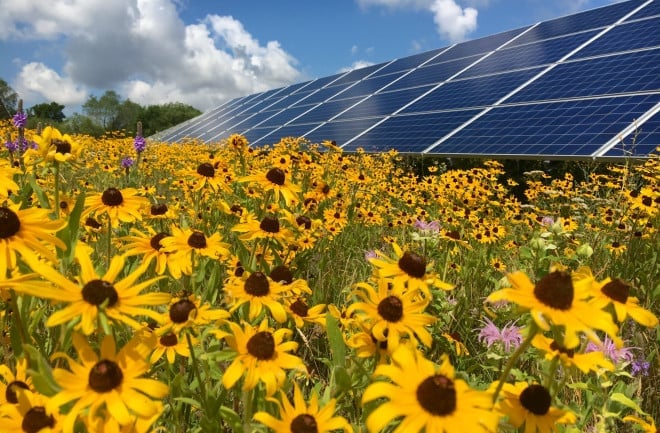
A new research study from the University of Sheffield has revealed that combining solar panels with farming practices can enable the UK to meet its solar energy targets without sacrificing farmland.
The research paper, which has been published in the academic journal Science Direct, shows that well-managed agrivoltaics (Agri-PV) projects can support the simultaneous production of crops, livestock and renewable energy. Furthermore, the research demonstrates that agri-PV has such high coverage potential in the UK that it alone could help meet UK solar deployment targets, with around 55.5% of British land proving suitable for deployment of agri-PV.
The study examined various regions of the UK to explore which would be the most suitable for agri-PV deployment, and specially identified Cambridgeshire, Essex, Lincolnshire, and the wider east and south-east regions of England. These regions were particularly highlighted as being ideal for agri-PV setups owing to their high availability of flat land, strong grid connectivity, and the prevalence of solar radiation.
The aim of this research is to fill key knowledge gaps and inform land use policy debates by promoting multifunctional land use, as well as encouraging further research to guide the development of agri-PV in the UK. While agri-PV is common in much of Europe, where leafy greens, potatoes, cereal crops and soft fruits have been shown to successfully grow in agri-PV settings.
Additionally, the report highlights the work of previous studies that note that agri-PV can in fact be significantly beneficial to crops, as the shade provided by the PV panels can help minimise the impact of drought and lower water use.
Co-author Dr Richard Randle-Boggis, who conducted agrivoltaics research at the University of Sheffield and is now a research scientist at SINTEF, said: “Research on agrivoltaics is extensive in mainland Europe, but very little has been done in the UK.
“Our next step should be field experiments to test the performance of the systems, investigate different designs with different crops and better understand the perspectives of local communities and other stakeholders.
“The loss of farmland is typically a major reason communities oppose solar park development in their local areas. Our research takes a leading step in demonstrating where solar parks could be developed alongside agricultural activities so that farmland is not lost.”
Professor Sue Hartley, vice-president for research and innovation at the University of Sheffield who co-authored the study, added: “The government and solar developers have ambitious plans for the expansion of solar farms but these risk the loss of agricultural land needed for food production at a time when global food security is threatened by geopolitical uncertainty and climate change.
“Agrivoltaic technology is a potential way out of this dilemma. It allows us to use the same area of land for both food and clean energy production, addressing some of the criticism levelled at solar farms. This technology is in regular use in many parts of the world, including areas like Scandinavia with less sunlight than the UK, but has not yet been adopted here.
“Our research identifies the areas in the UK where this technology can be most effectively deployed, both to mitigate land use conflicts and deliver the UK’s energy needs.”

